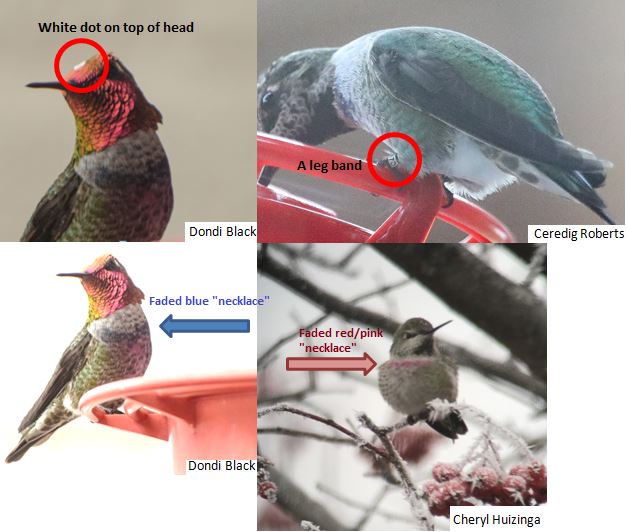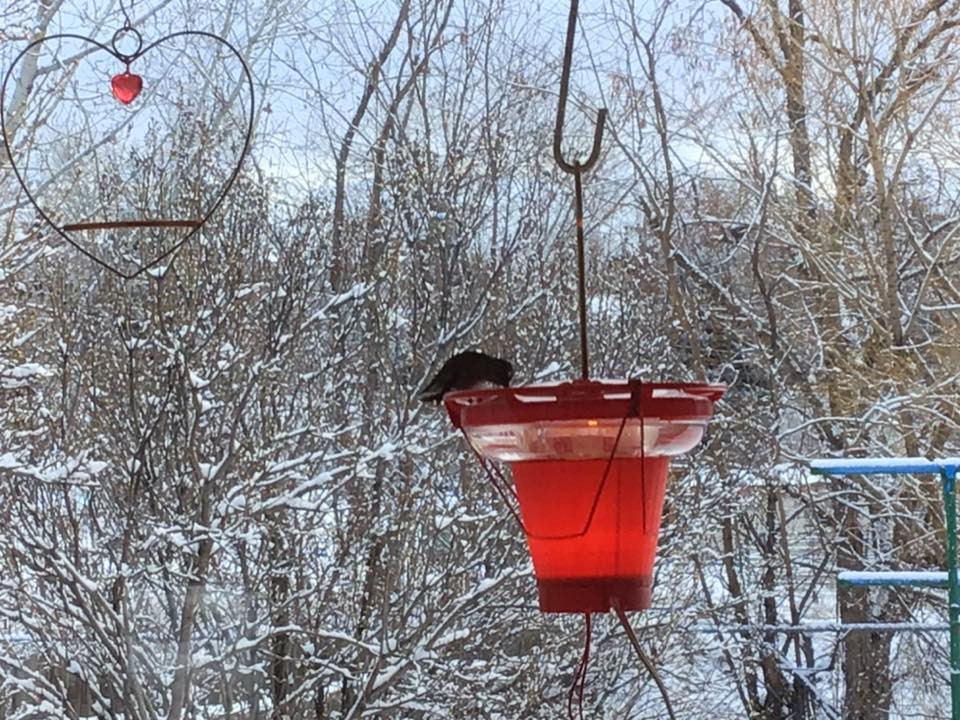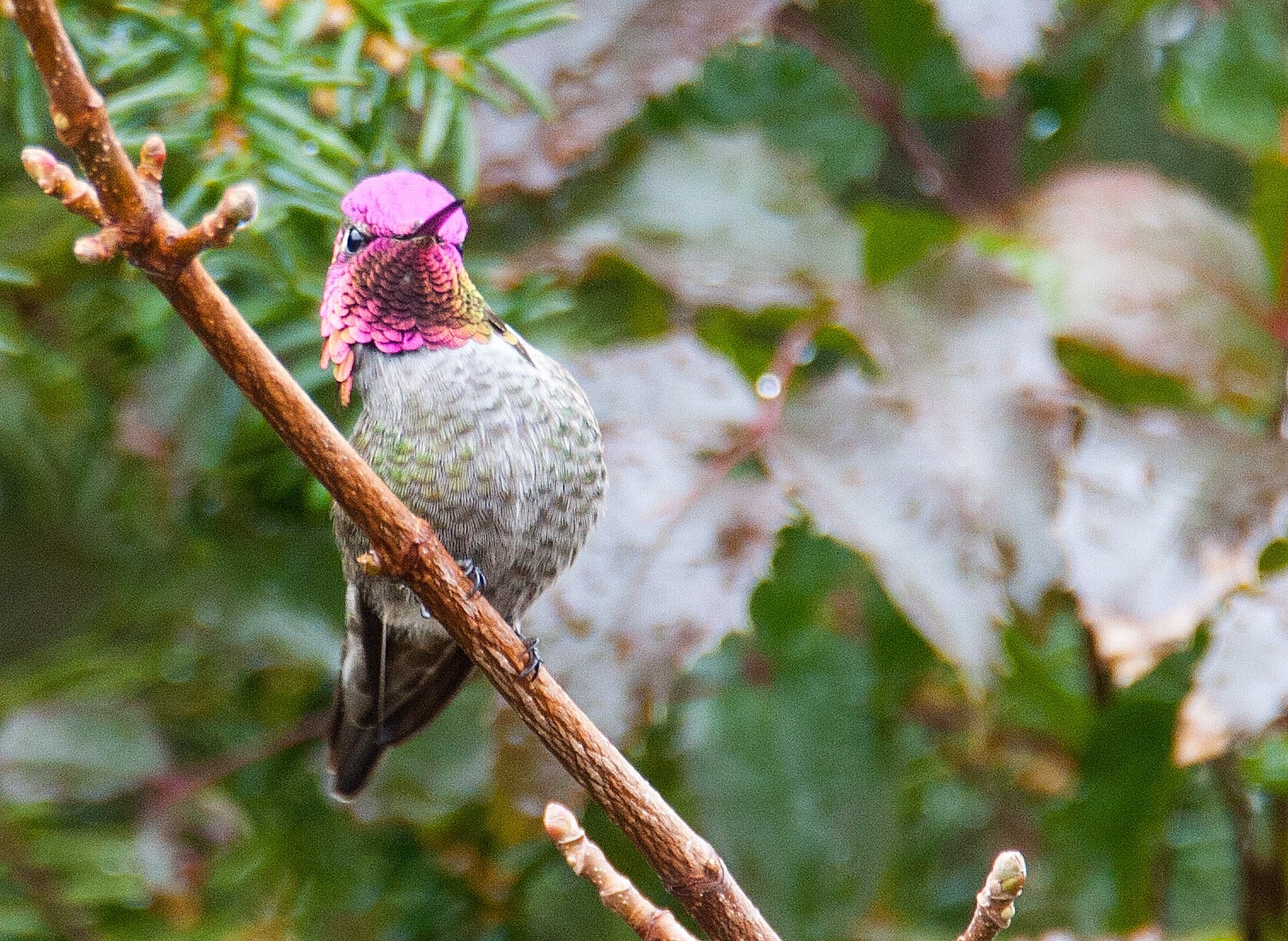Share your Sightings!
Become a community scientist! Send us your sighting information using our Winter Sightings Form, or Nesting Behavior Form. And be sure to also submit your observation to eBird if you have an account.
Project Background
Before 1930, the Anna’s Hummingbird only bred in Baja California. As humans settled the coast, Anna’s began to spread, and by the 1970’s they nested as far north as British Columbia.
This species was first recorded in Idaho in 1976, but they were still relatively rare until the early 2000s. Before we began our research in 2015 fewer than 10 were reported by birdwatchers each year. Now, we collect as many as 200 observations every winter.
Banding Research
Our goal is to thoroughly document Anna’s in Idaho by banding and color-marking as many individuals as possible.
Help us relocate birds in our study.

Here are the color marks to look for! Photos by Dondi Black, Ceredig Roberts and Cheryl Huizinga.
With your help sighting them we can learn more about their movement patterns and survival.
FAQs
Anna’s Hummingbirds are known to eat a high proportion of insects as part of their diet. This protein fuel, along with nectar, and even tree sap, help sustain them.
Many of the Anna’s we’ve captured as part of our banding program have very large fat stores during the winter! This fuel helps keep them warm.
You can learn more about winter hummingbirds in The Cornell Lab of Ornithology’s “All About Birds” article: There’s a hummingbird at my feeder in the dead of winter. Will it be okay?

- Wild Birds Unlimited in Boise sells heated feeders in-store. These are not available online, so please call to check on availability.
- Hummers Heated Delight feeders are available online and we have tested them into single-digit temperatures.
- Brooder heat lamps such as those used for chickens work well.
- A heated dog bowl with a saucer-style feeder works well (only for completely cat-free areas such as an elevated deck).
NOTE: These systems keep feeders defrosted. They cannot melt a frozen feeder. Be sure to leave your heating device on overnight, or be prepared to bring your feeder in overnight and set it out before dawn the next day.
This is actually a myth! Hummingbirds (and many other long-distance migrants) use day length to decide when to migrate. Leaving feeders up can actually help “stragglers” who are running late on migration.
Our research has found that Anna’s Hummingbirds choose to stay in areas regardless of feeder presence. Many of the birds in our study were first spotted when the homeowner did not have a feeder set out!
A Project Feederwatch study found that feeders along with urban habitat do allow Anna’s to survive in places they couldn’t before.
Once you have an Anna’s committed to your feeder, we don’t recommend taking it down unless temperatures are above freezing.
We are interested in all winter hummingbird sightings (October to March). Please complete the sightings form with any information you have. If possible, get a photo.
You can still enter your unidentified hummingbird sighting into eBird by submitting a report of a “Hummingbird sp.”. This still provides valuable scientific information.
If it’s in Idaho between October 15 and March 15 there’s a good chance that it’s an Anna’s. During the summer, the more likely species in the Treasure Valley is the Black-chinned Hummingbird.
Male Anna’s are unique from our other hummingbird species because they have an iridescent gorget on their forehead as well as throat. Although their gorget is magenta, it can appear black in indirect light.
Adult female and young male Anna’s have smaller iridescent gorgets on the center of their throat that often appear as a dark spot.
Young female Anna’s are the most difficult to ID, but are larger than our other hummingbird species and have a dull greenish wash on their chest. They are very difficult to distinguish from female Black-chinned Hummingbirds.
Visit the Anna’s Hummingbird page on Cornell’s All About Birds website to learn more.
That’s fine! We respect homeowner privacy and would love to hear about your sighting whether we end up banding the bird or not.
